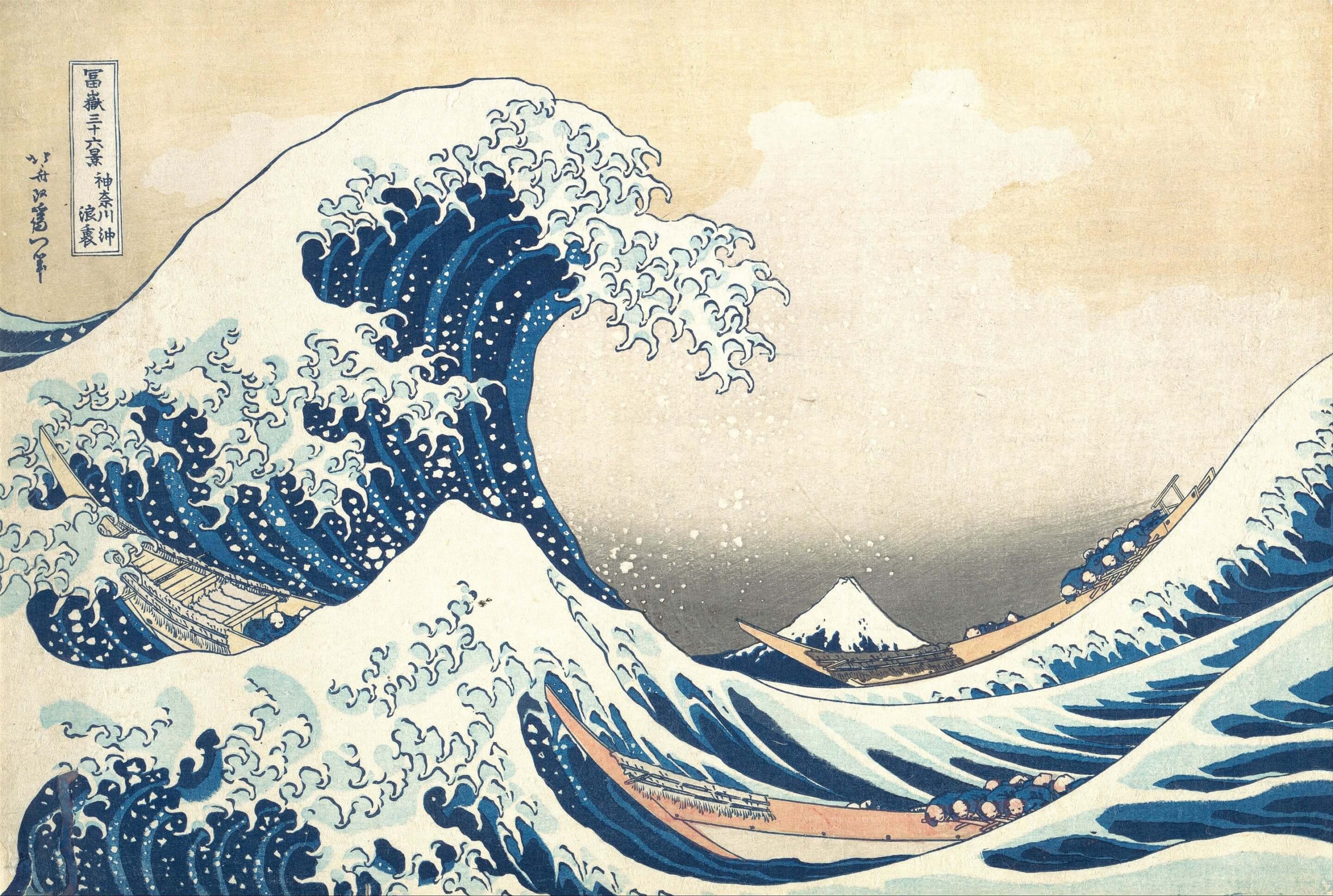This is one print of a series of 36 Views of Mount Fuji, and one of the most famous of all Japanese art. A terrifying moment before the rogue wave crashes into the three boats is captured with impossible stillness, the sea’s tentacles and claws fizzing with danger and power, the humans mortally exposed. The artist used the newly available Prussian blue (startling how little blue occurs in nature) which seems to give the waves extra force against the pale of the morning sky, and the foaming billows. Set at the back is the distant Mount Fuji: even this eternal symbol and fulcrum of Japanese culture is dwarfed by the terror of the natural world in full cry. Hokusai got better as he got older, saying that he wanted to live until he was 110 – “at 90 I shall have cut myself deeply into the mystery of life itself”: a strong case for the triumph of craft honed over a long lifetime. I was reminded of this as I watched Jimmy Anderson weaving spells this week, and of Pau Casals, who when asked, aged 95, why he practised, replied “because I think I’m making progress”. This picture has serious reach: it was the inspiration for Debussy’s La Mer, and a big influence on Van Gogh and Degas. Time and tide wait for no man, though, and this Wave, at last count the most reproduced image in history (now an emoji, too!), bears witness to the smallness of human life, the universal sensation of being overwhelmed, and to the human capacity, even when facing our own powerlessness, to create enduring beauty.

 Silence – Odilon Redon
Silence – Odilon Redon